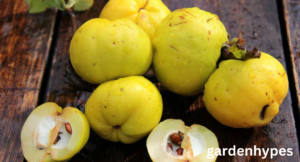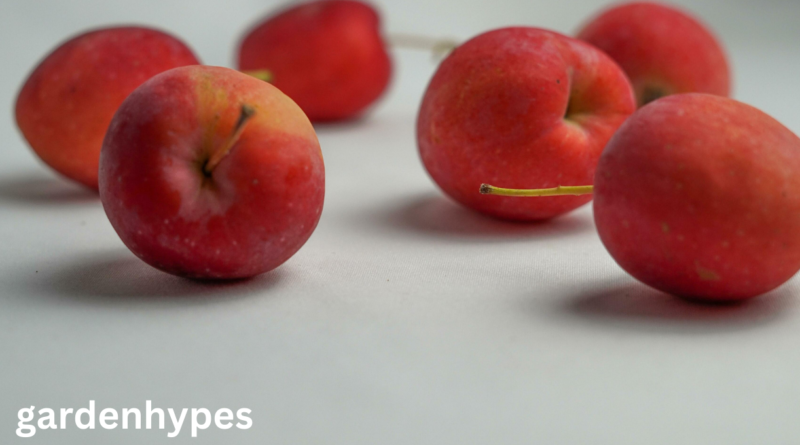Fruits That Look Like Apples
Fruits That Look Like Apples
Have you ever walked through a fruit market and noticed a fruits that Look Like Apples—but wasn’t? At first glance, you might think it’s just another variety of apple, but when you pick it up, smell it, or take a bite, you realize it’s something completely different. That’s the fascinating world of apple look-alikes. From tropical fruits to traditional orchard crops, many fruits resemble apples in shape, color, or texture.
click in link Strawberry Varieties
Apples are one of the most widely recognized fruits in the world, which is why it’s not surprising that other fruits with similar appearances often get mistaken for them. Some share the same round shape, some have the same glossy red or green skin, and others carry the same crisp bite. However, each of these fruits has its own identity, taste, and nutritional profile.
In this article, we’ll explore common and exotic fruits that look like apples, their differences, and their unique uses. Whether you’re a food lover, a gardener, or just curious about nature’s look-alikes, this guide will help you discover fruits you might have never heard of before.
Why Some Fruits Resemble Apples
At first thought, you might wonder: why do so many fruits look like apples? The answer lies in nature’s fascinating way of repeating patterns. The round, slightly flattened shape is one of the most practical designs for fruits. It allows seeds to be enclosed securely while offering an appealing form for animals and humans to eat and spread those seeds.
Another reason for resemblance is evolutionary adaptation. Many fruits grow in similar climates and share genetic traits, which sometimes lead to similarities in color, size, and structure. A glossy red skin, for example, is a natural signal of ripeness, making it attractive to animals and humans alike. This could explain why fruits like jujube or rose apple end up looking so similar to apples, even though they are not closely related.
There’s also a cultural perspective. Since apples are one of the oldest cultivated fruits, people often compare other fruits to apples when describing them. For example, quince is often described as “looking like a hard, yellow apple,” and rose apple gets its name simply because it resembles an apple.
In short, resemblance is a mix of biology, nature’s design, and human perception. But as we’ll see, while these fruits may look like apples, they each tell a different story when it comes to flavor, texture, and use.
Common Fruits That Look Like Apples
When we talk about apple look-alikes, there are several fruits you’ll commonly encounter. These fruits are often mistaken for apples in markets or gardens, and some are even related to apples in the plant family. Let’s explore the most popular ones.
Crabapples
If you’ve ever come across tiny apples on a tree and wondered why they looked so small, you’ve probably seen crabapples. They are actually true members of the apple family, just smaller and more tart. Crabapples usually measure less than 2 inches in diameter, making them easy to confuse with miniature apples.
Taste-wise, crabapples can be very sour, almost inedible when raw. However, they shine when used in cooking. People often turn them into jellies, sauces, or pickles. They’re packed with pectin, which makes them ideal for jams and preserves. Historically, crabapples were also used in traditional medicine because of their high vitamin C content and antibacterial properties.
In terms of appearance, crabapples can range in color from bright red to yellow and even green, just like their larger apple cousins. The main giveaway is their size and sometimes their slightly more irregular shape. If you’re foraging or gardening, crabapples are a delight to discover and definitely deserve a place on the list of apple look-alikes.
Quince
At first glance, a quince looks like a misshapen apple or pear. Its skin is green when unripe and turns golden yellow as it matures, often confusing people into thinking it’s a variety of apple. The fruit is hard and has a strong fragrance that fills a room once it ripens.
Unlike apples, quince is rarely eaten raw because it’s extremely hard and sour. However, when cooked, it transforms into something magical. Its flesh turns a beautiful pinkish-red, and the flavor becomes sweet, floral, and almost honey-like. Quince has been cherished in many cultures for centuries and is commonly used in jams, jellies, and desserts. In fact, the word “marmalade” originally referred to quince preserves.

Nutritionally, quince is a powerhouse of fiber, vitamin C, and antioxidants. It also has digestive and anti-inflammatory properties, making it not just tasty but also beneficial for health. Next time you see a golden, apple-like fruit in the market, don’t walk past it—chances are, it’s a quince waiting to be turned into a delicious treat.
click in link Strawberry Varieties
Jujube (Chinese Date)
The jujube fruit, also known as the Chinese date, is another fruit that looks surprisingly like a small apple. When fresh, jujubes are green and crisp, resembling tiny apples in both look and texture. As they mature, their skin turns reddish-brown, and they begin to resemble dried dates, hence the nickname.
In terms of taste, fresh jujubes are sweet and crunchy, much like apples. Once dried, however, they develop a chewy texture and caramel-like flavor. Jujubes are widely used in Asian cuisine, especially in teas, soups, and desserts.
Health-wise, jujubes are loaded with vitamin C, flavonoids, and antioxidants. They are believed to help with sleep, improve digestion, and boost the immune system. This makes them not just an apple look-alike, but also a superfruit in their own right.
Rose Apples (Water Apples)
Rose apples, also called water apples, are tropical fruits that can easily confuse people at first glance. They have a shiny, waxy skin and come in shades of red, pink, or green—much like apples. However, their shape is slightly different, often bell-like or pear-shaped, though some varieties are round enough to be mistaken for small apples.
The taste of rose apples is refreshing and watery, somewhat like biting into a pear with a hint of rose flavor. They are popular in tropical regions and are often eaten fresh, used in salads, or made into juices.
click in link Strawberry Varieties
Unlike apples, rose apples are very light and less dense. If you hold one in your hand, you’ll immediately notice how airy it feels. But visually, especially when placed alongside apples in a market stall, they can fool anyone into thinking they’re the same fruit.
Medlar Fruit
faqs
Medlar fruit is another unusual fruit that resembles an apple, though with a twist. It’s round and brownish in color, often looking like a slightly overripe apple. What makes medlar unique is that it needs to go through a process called “bletting,” where the fruit is allowed to soften and almost rot before it becomes edible.
Once ripe, medlar has a sweet, date-like flavor with a hint of cinnamon. Historically, it was a common fruit in Europe and often used in jams, wines, and desserts. While it’s not as common today, medlar remains a fascinating apple-like fruit with a rich cultural history.
- Which fruit looks most similar to an apple?
Crabapples and jujubes are the closest look-alikes to regular apples. At first glance, they have the same size, shape, and skin color. However, their taste and texture differ—crabapples are tart, while jujubes are sweet and chewy when dried. - Are crabapples safe to eat?
Yes, crabapples are safe to eat, but most varieties are extremely sour and not enjoyable raw. They are best used for making jams, jellies, sauces, or pickles because of their high pectin content. - Is quince related to apples?
Yes, quince is botanically related to both apples and pears as they belong to the same family, Rosaceae. However, quince is much harder and sourer than apples, which is why it’s usually eaten cooked rather than raw. - Can jujube be used as a substitute for apples in recipes?
Fresh jujubes can be used in some recipes as a substitute for apples, especially in salads or snacks, because they have a similar crunchy texture. However, when dried, jujubes taste more like dates than apples, so they’re not a perfect replacement in baking or cooking. - Which apple look-alike fruit is the healthiest?
Each has its own benefits. Jujube is packed with vitamin C and antioxidants, quince is high in fiber and aids digestion, and rose apples are hydrating and rich in vitamins. If you’re looking for overall nutrition, jujube is often considered the healthiest apple look-alike.
